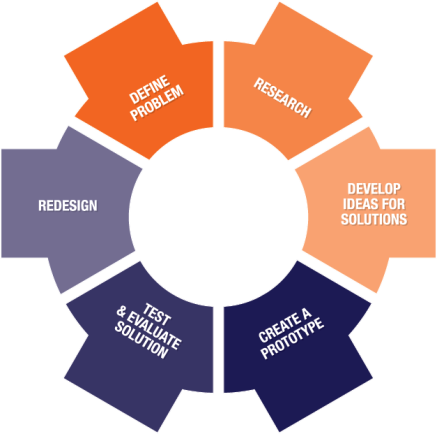The following articles was contributed by Devon Wible, Catapult Learning’s Executive Director of Product Development.
Don’t Miss our upcoming webinar, “Beyond Reading & Math Intervention: How Title I Funding Can Provide STEM and a Wider Range of Supports for Students” on Wednesday, April 18, at 1:00 PM EST, presented by Michelle Doyle and Devon Wible.
STEM certainly is a hot topic in education right now, and for good reason. A strong STEM curriculum does more than just focus on skill instruction; it provides learners with an integrated approach that brings together their knowledge from different core areas and allows them opportunities for tangible problem-solving that builds critical-thinking skills. High-quality, interdisciplinary STEM curricula provide valuable opportunities for students to learn and apply 21st century skills—like communication, collaboration, critical thinking, and creativity—as well as build and strengthen Habits of Mind that will benefit them both in and out of the classroom.
Arthur L. Costa notes in Learning and Leading with Habits of Mind, a book co-edited by Costa and Bena Kallick:
Educational outcomes in traditional settings focus on how many answers a student knows. When we teach for the Habits of Mind, we are interested also in how students behave when they don’t know an answer. The Habits of Mind are performed in response to questions and problems, the answers to which are not immediately known. We are interested in enhancing the ways students produce knowledge rather than how they merely reproduce it. We want students to learn how to develop a critical stance with their work: inquiring, editing, thinking flexibly, and learning from another person’s perspective. The critical attribute of intelligent human beings is not only having information but also knowing how to act on it.
When our students have a safe space to learn and apply Habits of Mind—like Perseverance, Listening with Understanding and Empathy, Thinking Flexibly, and Thinking About Thinking—they are not only developing into better students, they are developing into better citizens.
 Not all STEM curricula, however, are created equally, so it’s important that when integrating STEM into your classroom, school, and/or district, you look for high-quality programs that allow for inquiry and real-world problem-solving. One way to do this is to look for a STEM program that has been designed using the Engineering Design Process (EDP). This process, which is a key aspect of the Next Generation Science Standards, provides students with opportunities to develop a sophisticated problem-solving process they can transfer to other disciplines, and that can be used when taking high-stakes assessments. Most importantly, the EDP can be used when students are making sense of the real world.
Not all STEM curricula, however, are created equally, so it’s important that when integrating STEM into your classroom, school, and/or district, you look for high-quality programs that allow for inquiry and real-world problem-solving. One way to do this is to look for a STEM program that has been designed using the Engineering Design Process (EDP). This process, which is a key aspect of the Next Generation Science Standards, provides students with opportunities to develop a sophisticated problem-solving process they can transfer to other disciplines, and that can be used when taking high-stakes assessments. Most importantly, the EDP can be used when students are making sense of the real world.
The EDP is a series of steps that engineers use to guide them as they solve complex, real-world problems. The process reflects the way engineers approach problem-solving—brainstorming for ideas, trying them out, learning from their mistakes, and then trying new ideas based on what they learned. While these steps are often taught in sequence, you will find that as students internalize this problem-solving process, they will find it’s flexible and can be applied to many situations. With its emphasis on creative and critical thinking, students learn there are many ways to approach a problem and that mistakes are actually great learning opportunities!
While integrating STEM can seem like a daunting endeavor, it doesn’t have to be. The first step to bring STEM into your classroom is to start, and you can even start relatively small. You can begin with as little as 30 minutes of integrated STEM per week. Doing small, hands-on STEM projects using the EDP is a great way to introduce STEM to your students and provide opportunities for flexible, higher-order thinking and problem-solving that integrates skills your students have learned as part of their core instruction.
STEM will, and should, continue to be a hot topic in education because it’s good for students! A strong STEM curriculum—even starting with only 30 minutes per week—allows students opportunities to integrate their learning across disciplines and to approach problem-solving with confidence. As students begin to understand the real-world implications of STEM, they harness a natural curiosity to explore the world around them and embrace the challenges of tomorrow.